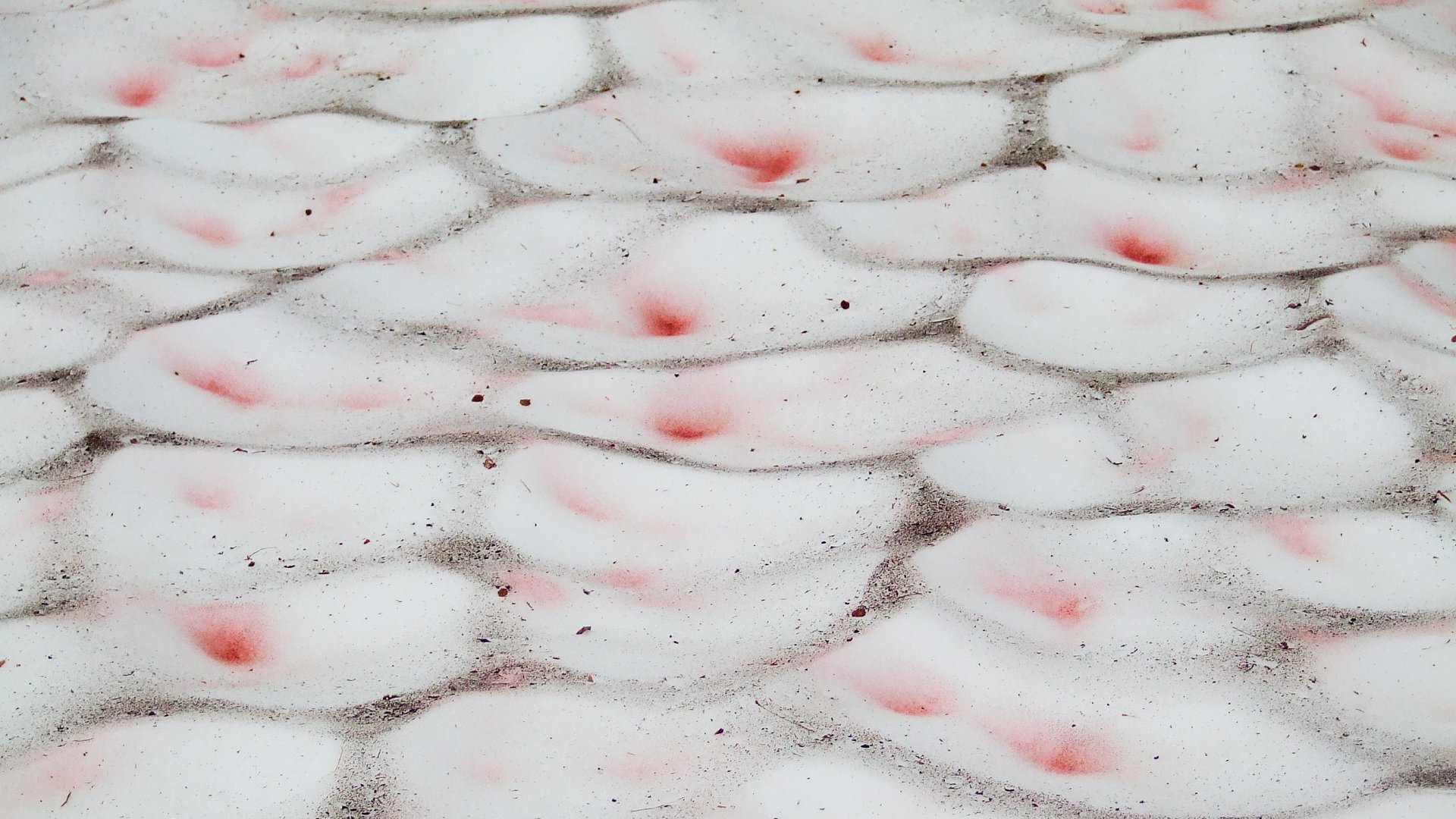The green algae Chlamydomonas nivalis is mostly known by its occurrence in snowy mountains. With its red pigments it forms so called watermelon snow. There are two mating types in this species, analogous to sexes. Instead of males and females the mating types are called + and −.
The green algae Chlamydomonas nivalis is mostly known by its occurrence in snowy mountains. With its red pigments it forms so called watermelon snow. There are two mating types in this species, analogous to sexes. Instead of males and females the mating types are called + and −.
The genus Chlamydomonas includes a few hundred species of single-celled green algae that all have two flagella to propel the cell. The oval to round cells of C. nivalis are usually 5–15 µm in diameter, but can grow up to 40 µm in their immobile, red stage.
Reflect on algae
How can micro algae influence a macroscopic process such as climate? This can be explained by the pigments of Chlamydomonas nivalis, the melting of snow, and the albedo of snow. The pigments protect the algae against UV radiation. The radiation is transformed into heat within the cells, which causes snow around the cells to melt. Albedo is the reflectivity of an object or surface. For example, a forest reflects little solar radiation; the albedo of forest is low. Snow on the other hand reflects most of the radiation that falls on it and has a high albedo. Large snow plains hardly absorb any heat. If a lot of overwintering C. nivalis are present, they absorb a lot of radiant heat, and the albedo of the snow plain becomes lower. The result is that the entire area retains much more heat, and also warms up the air layers above it. In such a way, many microbes together can have a major effect on the climate.
Algae like a traffic light
The life cycle of C. nivalis has three phases: green, orange and red. In the spring and early summer, moving green cells are formed in melting water by ripening. These cells have the characteristic two flagella and swim around to find optimal light conditions. During this phase, the green cells mainly contain chlorophyll, the pigment that all photosynthesizing organisms have. Later in the summer the nutrients start to become scarcer and the solar radiation becomes more intense. The cells begin to store sugars and fats in the orange phase and they lose their flagella. During the orange phase, the cell wall also thickens to survive the approaching freezing cold. When winter arrives, the orange cell turns into a red spore. In the red phase, the cells contain a lot of the substance astaxanthin, a red pigment that protects the cell against UV radiation. As red cells they wait until spring starts and the green offspring can go their own way again.
Advanced freezing
An extremophile is an organism that can live well under extreme conditions. Circumstances in which a human would not survive even a microsecond. Most extremophiles are microorganisms such as fungi, algae, bacteria and especially archaea. Extremophiles living at extremely low temperatures are called psychrophiles. There are microbes that can survive in the coldest areas on earth. The nematode Panagrolaimus davidi mainly occurs along the coast of Antarctica and can withstand temperatures of -80°C. It is one of the few organisms that can survive internal freezing. More than 80% of the moisture in its cells can freeze without dying. It prevents cracks in the cell membranes with the sugar molecule trehalose. To protect themselves, many psychrophiles produce anti-freeze proteins. These bind with the microscopic ice crystals and prevent them from clumping into larger crystals and puncturing the cell. At the exhibit "Extremophiles" in Micropia you discover in which other extreme places of the world microbes can survive.

